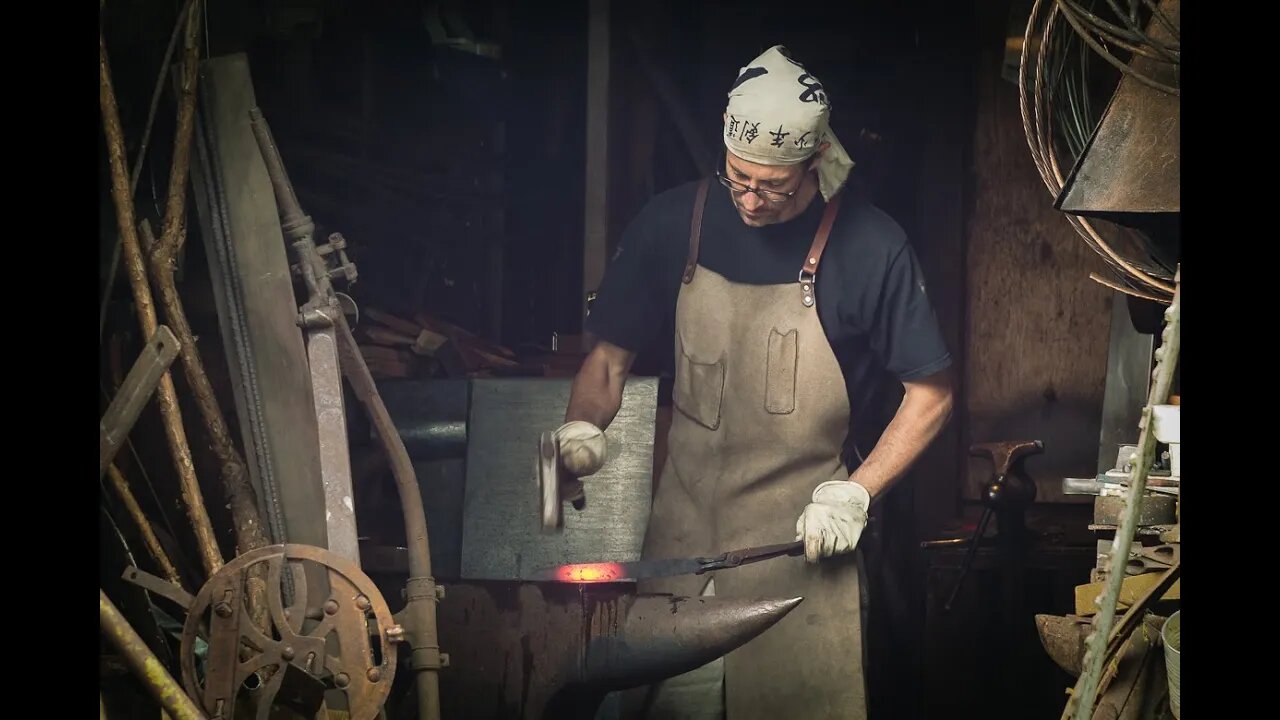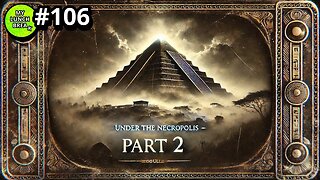Premium Only Content

TLDW #1 - Full Process: Forging a Shear Steel Tanto Blade - Historical Knife Making
***This is the full length version from start to finish (minus all the heating time), for the 4 minute radio edit, see: http://youtu.be/BcCrtq2c4vs
**Note that this is a classical Japanese style tanto based on the Aizu Shintogo: http://islandblacksmith.ca/2014/04/aizu-shintogo-kunimitsu-tanto-kata/
Charcoal forging a traditional tanto pattern blade from half of a reclaimed shear steel horse carriage leaf spring. The two distinct stages are sunobe and hizukuri...sunobe establishes the geometry and proportions, and hizukuri is putting in the bevels and creating the final shape. The final dimensions take a little extra care as this blade is being forged very closely to a traditional kata.
The kata I am measuring it against is the Aizu Shintogo, however there was not enough steel to produce the full thickness on the mune (motokasane) of the original blade. Info on the Aizu Shintogo tanto: http://islandblacksmith.ca/2014/04/aizu-shintogo-kunimitsu-tanto-kata/
More about classical tanto geometry: http://islandblacksmith.ca/tag/tanto-geometry/
The finished forging has a subtle recurve and a slightly dropping spine compared to the kata as the process of yaki-ire will cause the spine to curve upwards.
Shear steel is a very old and somewhat rare form of steel produced by increasing the carbon content of wrought iron using heat and charcoal to create a reduction atmosphere and then forge welding and folding layers together to homogenize the billet. Finished blade has distinct visible layers telling the story of its history.
Actual forging time including heating and some of the final work lost to battery issues was probably about 2 hours.
-
 11:19
11:19
Tundra Tactical
18 hours ago $1.45 earnedI Saw How CMMG Makes Guns.
9.1K5 -
 15:34
15:34
Misha Petrov
13 hours agoReacting To TikTok’s Most DELUSIONAL Takes!
7.42K14 -
 1:52:24
1:52:24
Squaring The Circle, A Randall Carlson Podcast
1 day ago#032 Flournoy Holmes' Artwork Helped Define The Southern Rock Phenomenon of The Early 1970's
6.25K3 -
 19:56
19:56
inspirePlay
1 day ago $0.01 earnedWalking with Lions & Facing Africa’s Wild Side | Safari Adventure with the Grid Championship Crew!
2.57K -
 10:50
10:50
RTT: Guns & Gear
1 day ago $0.34 earnedBudget Friendly Carry 2011: EAA Girsan Brat 2311
5.4K1 -
 3:49:06
3:49:06
Alex Zedra
15 hours agoLIVE! New Game | Nuclear Nightmare
97.4K13 -
 25:08
25:08
MYLUNCHBREAK CHANNEL PAGE
1 day agoUnder The Necropolis - Pt 2
280K64 -
 1:45:59
1:45:59
Spittin' Chiclets
1 day agoCanadian Chokejob - Game Notes Live From Chicago - 12.28.2024
259K32 -
 9:18
9:18
Space Ice
1 day agoThe Guyver - Alien Bug Suits, Exploding Dragons, & Mark Hamill - Weirdest Movie Ever
164K26 -
 9:31
9:31
Silver Dragons
1 day agoSilver Has Failed - Can it Set the Record Next Year? THIS BANK SAYS YES!
3.23K2